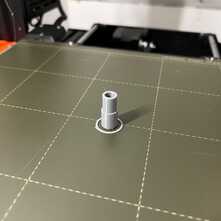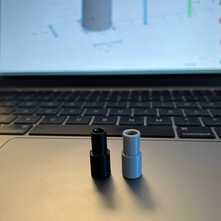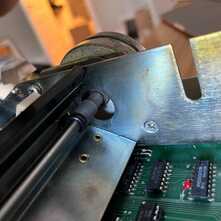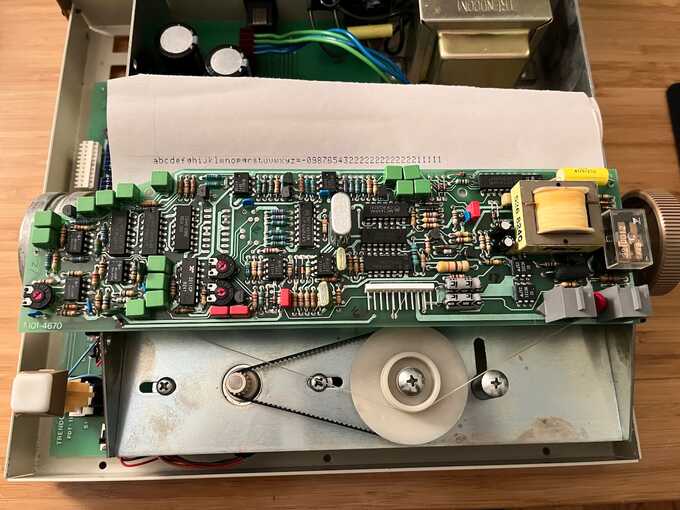BBSing at 300 Bits Per Second
I recently acquired a 3M Whisper Writer 1000 communications terminal circa 1983, and restored it to working order. This is a short session of it dialing into my Kludge BBS (hosted on a Macintosh Plus circa 1986) over its internal 300 bps modem.
Repair
When I first received the terminal, the paper would not advance when pressing the Return key but I could hear the motor trying to. Upon disassembly, I found that a plastic cap joining the Airpax A82743-M4 stepper motor to the paper feeder bar (I have no idea what the proper names of these parts are) was cracked on both sides, which allowed the bar to slip each time the stepper motor turned. I'm assuming this cap is not more permanently secured to both ends so that if the paper is jammed, the stepper motor doesn't burn out trying to turn.
In about an hour, I had created a model of the plastic cap in Tinkercad and 3D-printed it, and the paper now advances properly. Modern technology is neat.
- Download: Whisper Writer Stepper Cap model (STL)



Modem
My particular unit is a Whisper Writer 1480BA, which includes an internal 300 bps modem operating on the Bell 103/113 standard. Other models have an RS232 card instead which I would probably prefer, since that would make it easier to interface with my other equipment.
From what I gather, the keyboard was sold separately so the unit could be used as a somewhat standalone printer. With its internal modem, it could auto-answer incoming calls, print out the message being transmitted, and then hang up. Like a slightly more modern telegram.

Connecting
The 300 bps modem requires a data/parity/stop configuration of 7 bits, 1 even
parity bit, and 1 stop bit (7E1), so I had to
add support to Subtext
to allow configuring these settings rather than hard-coding the usual 8N1.
I also had to set my BBS's modem's initialization string to use a Bell answer
tone (ATB1).
Since the terminal's modem does not have any way to dial on its own, it requires a separate handset plugged into the underside. A number is dialed on the handset and once the modem tone is heard, the illuminated "data" button is pushed to cut off the handset's speaker and mouthpiece and start the connection. Unlike more modern modem connections which can transfer data at much higher speeds, there is no negotiation of features and error correction, so the connection starts almost instantly.